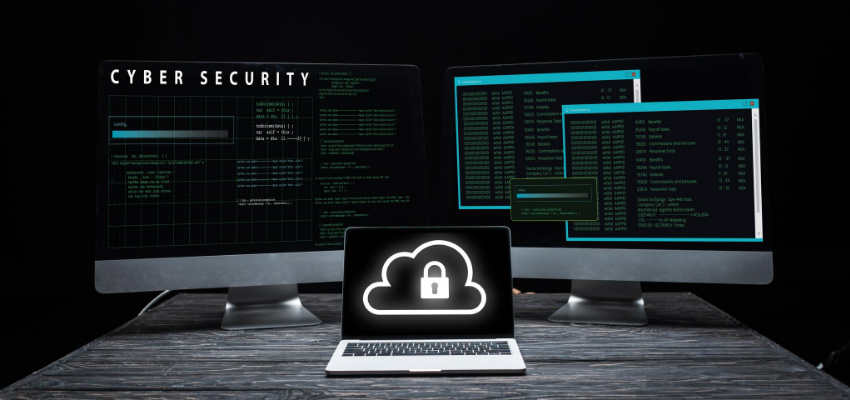Show:
Demystifying Data Security – A Comprehensive Definition and Explanation
Data security is a common household name among businesses. It’s a significant practice that needs robust tools and systems to maintain the organization’s security. Data security utilizes digital measures of protecting sensitive information from unauthorized users. Businesses enhancing their security measure need to implement measures that help protect data from potential disruption, destruction or damage.

The primary aim of data security measures is to maintain confidentiality in business sensitive data. It’s mandatory for organizations to incorporate reliable data security strategies that help curb potential cyberattacks. This helps protect valuable information and keep customers’ data safe. It’s a great way to maintain trust and build a company’s integrity.
Data Security and Data Privacy
Data security and data privacy are quite similar but totally or literally different. However, the two work interchangeably and are significant in running an organization.
Data security
This is the actual measures implemented by businesses or individual users to prevent unauthorized access to sensitive data. It’s the available ways to prevent potential malware and cyber-attacks on a company’s important data and system. Data security is set to safeguard data and enhance integrity.
Data privacy
The privacy status is the preventive measures taken by organizations on who should have a chance to access business confidential information. Data privacy controls what should be visible to who and what they can do with the information.
Data protection
Data protection is the strategic way designed by businesses on data policies, technology and ways to secure their data from unlawful users. This prevents data alteration or damage, thus combining the data security and data privacy measures.
Data security and modern companies: Importance
Modern companies are utilizing digital systems to enhance their engagement with clients. Majority are implementing special tools to help in data security and educate their members on various ways to note malicious acts. Organizations should value data security as it comes with multiple benefits, such as:
- Improves performance
Secure systems give employees peace of mind as they work on safe grounds. Data security systems help improve business performance and increase productivity. With secure tools, it’s easy to meet client demands and maintain optimum integrity.
- Secure information
Data security tools ensure to safeguard business’s data and maintain confidentiality in customers’ information.
- Building trust
Customers tend to trust companies that utilize high-end security systems. Organizations with data breach issues are likely to lose customers, especially if the right measurements are not implemented.
- Enhance a competitive edge?
Building trust and good bonds with clients helps organizations attain a positive and high competitive edge. Most customers would prefer a competitor who maintains a good data security history and handles data breaches seriously.
- Reduces financial loss
Data breaches are quite expensive as most companies spend millions of dollars trying to rectify mistakes in cyberattacks and malware. This drains the company’s finances and reputation. A proper data security software helps prevent all the potential losses.

Potential threat to business’s data
Data breaches are not limited to external sources as a simple internal mistakes can cause huge damage. Employees or stakeholders can intentional or intentional trigger a malicious malware. The company’s data is prone to multiple data threats as follows:
- Unintentional data exposure
A malicious virus can affect sensitive data through simple and innocent click. Hackers use email attachments and sites to persuade innocent users.
- Social engineering
The social engineering threat ranks as the highest malware channel in the cybercrime sector. The act persuades unsuspecting users to take particular actions which cause system damage.
- An insider threat
An insider threat is typically an internal threat from either current or former employees. Some users don’t have ill intent and may not be aware of the damage they caused.
- Malware
This is a set program or link that is directed to tamper with a network or server and cause issues with the data. There are different types of malware, including spyware, ransomware Trojans and more.
- Ransomware
Organizations should look out for the ransomware threat as it is a form of data breach used by hackers. They interrupt the company’s data and operation and demand a ransom to release the sensitive information.
- Cloud data storage issues
Cloud storage is pretty popular among enterprises with many users shift from manual storage to digital cloud systems. This opens a channel for cyberattacks, which potentially tampers with important data.
Exclusive components to help solve data security
To curb data insecurity issues, organizations need to invest in different components to improve security details.
- Regulating data access
Businesses need to regulate their data access and ensure authorized users follow the set company and data policies. It’s also wise to educate employees on what they can and cannot do within a given system. Businesses can incorporate the principle of least privilege to ensure employee only have access to important matters.
- Enhance Cloud data security.
Cloud data comes in handy to offer digital remote and storage services. It’s an advanced system that helps businesses store significant information. However, cloud data security should be a major concern for organizations as they should check the privacy policies and data protection details before settling for a cloud system.

- The Data loss prevention
The DLP is a crucial system that allows companies to easily detect and prevent losses and data damage. Data loss prevention provides user with strategies to know data breaches and help in setting up governing policies.
- Key management
The Key management is an important component that helps secure cryptographic keys. The feature works by generating the keys, exchange and storing, deleting and updating them. Key management ensures no unauthorized user has access to sensitive data.
- GRC/ Governance risk and compliance
GRC keep businesses running by managing potential risks and meeting regulation rules. It’s easy to align company data details with the right systems that minimize potential data risks.
- Zero trust
The zero trust uses a simple slogan: “trust nobody but verify always.” It’s an advanced framework that allows organizations to verify all devices and users before accessing the network. The Zero Trust assumes all internal and external users and devices are threats and need verification.
Different types of Data Security
Data security systems work on securing organizations’ data. However, one should check on significant aspects that affect the data security. The user or organization should understand:
- The type of data, the location and sensitivity.
- One needs to check the data movement and data controls that help in securing the data regardless of the location.
- Business should enable the least privilege access to help limit data and system access.
- Encryption
Encryption is a secure process of concealing data by simply converting and disguising it to random data. The process uses advanced algorithms that help in encoding data, rendering it useless to unauthorized users. The legal user can easily decode the data and use it for anytime.
- Data masking strategy
Organizations can seal sensitive data by hiding or making it unrecognizable. One can replace or mask using different numbers or letters to confuse attackers or other users.
- Data erasure
The erasure system helps to permanently delete unwanted or used data.
- Data resiliency
This a unique strategy of creating backup for all the digital files and information. It’s a cautious move that allows businesses to recover data in case of threat or data damage.

Best and effective data security practices
To enhance your data protection policies, companies need to invest in best data security practices such as:
- Identification verification
Businesses need to implement systems like Zero Trust to help in verifying the identities of every user and device. This will keep the system secure from both internal and external threats.
- Include the principle of least privilege.
Organizations should limit the access of users to sensitive data. This prevents unauthorized users from availing important information.
- Backup services
With all the robust tech in data security, it’s advisable to have consistent data backups. The information comes in handy in case of any interruption.
- Endpoint security
Businesses can secure the data and networks by investing in endpoints measurements that reduce and prevent risk of cyberattacks.
- Proper training
It’s the company’s responsibility to train their employees on different cybercrimes and how to tackle each problem.
- Secure all networks and devices.
Every gadget involved in business and data operation should be well-secured to avoid data leakage or malware links. Business should secure their Internet of Things devices to stop any potential threats.
Enhance cloud and physical security.
Cloud system also require high security as they prone to different insecurities. One can implement secure platforms and backup systems for more security. The physical damages can also cause interruptions; users can attain backup for easy retrieval.
Available frameworks to help in data security
The global and regional data security regulations are set to help on streamlining security in different networks. The regulations help in privacy settings to help govern each organization. There are various data privacy regulations to consider for your organization.
- ISO/IEC27001
- The General Data Protection and Regulation
- California Consumer Protection Act
- Health Insurance Portability and Accounting Act
- Sarbanes-Oxley Act
- Payment Card Industry Data Security Standard.
With the right measures, businesses can have a smooth sail and worry no more about potential attacks.

 Return to Previous Page
Return to Previous Page








